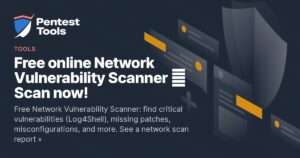How to Work With Network Vulnerability Scanners
Network Vulnerability Scanners
Network vulnerability scanners (NVS) are programs that scan systems across a network and identify the vulnerabilities. These programs scan for open ports, vulnerabilities, and weaknesses in software. They can be installed as hardware appliances or run as virtual machines. Both types are effective in securing your system and can identify the sources of security threats.
The first step in implementing a network vulnerability scans is to configure the scan tool. Set the target IPs, port range, and protocol. After selecting the target IPs, you can then add the devices or protocols you’d like to scan. These can be Windows servers, applications, databases, and wireless devices.

Network vulnerability scans can also be performed on cloud-based systems. Many modern tools are able to hook into your cloud account and scan employee devices, firewalls, and edge routers. These scans are vital for your network security and compliance efforts. The process of conducting these scans is simple, so it’s important to use the tools that have been designed specifically for this purpose.
How to Work With Network Vulnerability Scanners
There are a variety of ways hackers can infiltrate your network, and vulnerability scanning tools are not capable of addressing all of them. For example, using third-party applications that have outdated software can leave network devices vulnerable to security gaps. Moreover, these third-party applications are often not updated with the latest security patches. Threat actors can take advantage of these holes and use them as backdoors.
Once you’ve found a vulnerability, it’s important to prioritize remediation efforts. The tools prioritize vulnerabilities based on their likelihood of being exploited and their impact on the system. The most important vulnerabilities to prioritize are those that allow remote code execution. These vulnerabilities are often the most dangerous because they allow attackers to gain access to your network and run additional malicious software.
To run a successful vulnerability scan, you need to create policies that govern the scanning process. Those policies should include all aspects of vulnerability scanning, and should be approved by upper management. These policies should also define how often vulnerability scanning is performed. Defining the frequency of these scans will help ensure that they are being carried out as planned. It is also necessary to document how these scans are configured and run.
Most vulnerability scanners offer free trials. These trials are a great way to get familiar with a product and test its features. Some of these scanners also let you run scans on your own systems, which allows you to compare them side by side. However, like-for-like comparisons are not always possible, so it is important to test various options before deciding which one is right for you.
A network vulnerability scanner is not a standalone program, and needs to be used in conjunction with a vulnerability management solution. The purpose of a vulnerability assessment solution is to determine whether an organization is at risk of cyber-attacks. Without a proper vulnerability management plan, these attacks can cause a massive loss of data.